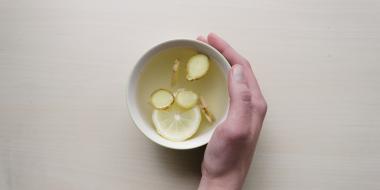Since their discovery in the late 1920s, antibiotics have transformed modern medicine, improving illness recovery times and preventing serious complications. They’ve become so commonplace that between 2004 and 2010, more than one quarter of U.S. children took at least one antibiotic a year! Although antibiotics are lifesaving for serious bacterial infections, excessive or inappropriate use may not only harm the patient by causing a variety of side-effects, it can actually make (and has made some) antibiotics ineffective. It’s important to understand both how improper use of antibiotics can work against us, and how to mitigate their side-effects when they must be prescribed.
The Down Sides
Antibiotic resistance:
We have only recently begun to understand the consequences of overuse and misuse of antibiotics. The antibiotic resistance phenomenon is a combined result of too many antibiotics used too often and incorrectly, and too few new developments in antibiotic research. When bacteria are exposed to non-lethal doses of an antibiotic they can develop evasion and mutation strategies to protect themselves from that specific agent. This means that the next time the same antibiotic is prescribed, the antibiotic won’t work and those bacteria will be able to survive. On a larger scale, as bacteria are rapidly changing and becoming resistant to the medicines we have available, it can result in infections known as “superbugs” that can no longer be eliminated by the antibiotics we have available, and which in the worst cases have the potential to become epidemic, possibly globally. Inappropriate prescribing practices aren’t the only sources of resistance, as antibiotics are also ubiquitous in conventional agricultural systems, and are even found in municipal water supplies.
Help reduce the risk:
• Take antibiotics only for bacterial infections
• Complete the antibiotic course as recommended
• Do not take the dosage in any manner other than prescribed
• Ensure you are taking the right antibiotic for the infection
• Do not take anyone else’s antibiotics or leftovers from a previous treatment
Microbiome disruption:
The microbiome is a diverse ecology of bacteria that live in our bodies and play a central role in human health by supporting our immune system, protecting us from harmful organisms, and by providing absorbable nutrients (like vitamin K!). Unfortunately, antibiotics can disrupt the microbiome community. Almost half of the antibiotics prescribed to children in the U.S. are broad-spectrum antibiotics that kill off both harmful and beneficial bacteria, which results in an imbalanced microbiome, or dysbiosis, and creates a perfect breeding ground for detrimental organisms to grow and cause illness. This is why you may have experienced a yeast infection after taking a round of antibiotics or, especially in the case of children, may commonly suffer from digestive upset and diarrhea afterwards.
Watching and Waiting
While efforts are increasingly made by doctors to ensure that antibiotics are given only when needed and that they are prescribed and disposed of correctly, studies have shown that worried caregivers can substantially influence the over-prescription of antibiotics. It’s important for parents to understand and question why an antibiotic is being prescribed. What are the conditions that make it necessary? Will the illness typically resolve on its own within a relatively short time?
Crucially, antibiotics are only effective for bacterial infections, and are not useful for treating common viral infections like colds, flus, and most ear infections which generally resolve on their own within seven to ten days; seeking antibiotics will not improve symptoms or shorten their duration. If it is not immediately clear if a child is dealing with a viral or bacterial infection, your doctor may utilize a “watch and wait” strategy, giving a prescription for antibiotics with the instructions to treat the symptoms (like pain or congestion—see below) and only obtain and use the drug if symptoms have not improved within 48 hours (by which time most viral infections would show signs of being on the mend). This approach is implemented when a delay in treatment does not increase the risk of serious illness, such as with ear infections. If your child is dealing with more severe symptoms like inconsolable pain or a high fever, the likelihood is greater that the cause of the infection is bacterial, and your doctor could appropriately advise immediate antibiotics.
Supportive therapies
There are several natural approaches that can help to make your little one more comfortable and prime them to fight off the infection, reducing the likelihood that they will require antibiotics. These time-honoured therapies help little ones (and big people!) endure the unpleasantness while their body does its germ-fighting job!
Magic socks are a form of hydrotherapy that helps to decrease head and sinus congestion, and increase circulation and immune function. To make your own, soak a pair of cotton socks with very cold water, wring them out well, and have the child wear the socks to bed layered with a pair of wool socks over them. The magic? The body adjusts its circulation to heat up the cold feet, which in turn impacts surveillance of the immune system and alleviates congestion.
Chest rubs with castor oil or eucalyptus cream can help to soothe a cough. Castor oil can also be rubbed on the tummy to improve immune function and digestion.
Herbal teas are tasty ways to increase hydration so the body can fight off infections. Soothing teas like chamomile, lemon balm, or hot lemon-honey water can be helpful to calm
irritability, and cooling herbs such as peppermint, yarrow, or catnip can help release a fever. An infusion can be incorporated into soups and smoothies, or even poured into bathwater.
Herbals like Echinacea and elderberry help boost the immune system and fight infection. Both can be found in child-friendly products such as syrups, teas, or tablets. Ear oil infused with garlic has been shown to reduce the pain associated with ear infections, and a honey-infused cough syrup with onion (!) and thyme not only works, it actually tastes yummy (for littles over 12 months).
Honey-Thyme Cough Syrup
Large bunch of organic fresh thyme (or 3 Tbsp dried)
1 onion, chopped
1 c organic raw honey
2 c water
Place thyme and onion in a glass jar with lid.
Bring the water to a boil. Pour water over thyme and onion.
Add honey, and let sit until cool.
Seal and keep in the fridge for up to two months.
Use 1–2 teaspoons as needed for cough or sore throat
Supportive diet practices like decreasing sugar consumption, emphasizing proteins, and increasing vegetable consumption can help to support the immune system. Incorporating bone broth is comforting and strengthening for the body, and an icy homemade smoothie or popsicle with pureed berries and greens can feel heavenly on a scratchy throat.
Side-Effect Resistance!
After careful consideration, your doctor may agree that antibiotics are the ticket to recovery. While taking them, you can promote healing with microbiome-friendly foods appropriate to your child’s age. These nutrients support the immune system, feed beneficial gut bacteria, and help to recolonize the gut (in the case of fermented foods) while it’s being compromised.
Breastmilk contains active immune complexes that support the developing immune system. If it is an option for you, it’s recommended to continue to feed at the breast if your little one is fighting an infection. When expressed breast milk is frozen, stored, thawed, or heated, some of the bioactive compounds are lost, increasing the risk of ear infections, for example.
Fibre feeds gut bacteria, which are essential to the immune system. To ensure your child is getting enough, aim to incorporate more whole, plant-based foods, as they contain loads of fibre, antioxidants, and vitamins. Great high fibre foods include apples (with peel) or raspberries, nuts and seeds, any beans, and whole grain products. Younger children (1–3 years old) usually need about 19 grams of fibre daily, whereas children aged 4 and up should be having about 25 grams of fibre per day.
Fermented foods like kimchi, sauerkraut, pickles, kombucha, kefir, and yogurt are a delicious way to deliver natural probiotics. Read the label to ensure that pickled products are fermented and not simply canned in vinegar.
Probiotic supplements can help, especially with preventing antibiotic-associated diarrhea, a common side effect, particularly in children under the age of two. They may also be an option if your baby is not breastfed. Probiotics can temporarily replace the gut bacteria killed off by antibiotics, preventing diarrhea and opportunistic infections while the child’s natural microbiome is reestablished.
Outstanding strains: Saccharomyces boulardii and Lactobacillus rhamnosus GG – whether used alone or in combination with other probiotics – are particularly helpful when co-administered with antibiotics in children aged 0–18 years, with guidelines recommending between 5 and 40 billion CFUs, depending on the child’s age and other factors. The probiotics should be taken during the antibiotic course, but at least 2–3 hours both before or after medication when possible. Even probiotics can be killed off by the antibiotic (with the exception of S. boulardii).
Antibiotics have helped to extend the average life span by treating once deadly infections that we now consider relatively minor nuisances. But we have been victims of our own success and research shows that our attachment to antibiotics has led to unintended consequences like antimicrobial resistance and dysbiosis. By being aware of these consequences, being more judicious in our use, and employing supportive therapies to ease the symptoms of infection and treat side effects when we do take them, we can continue to rely on these remarkable drugs to have their important role in our healthcare.






